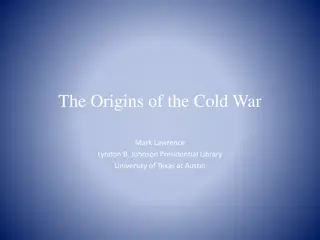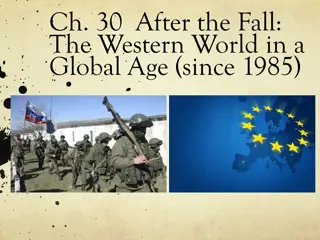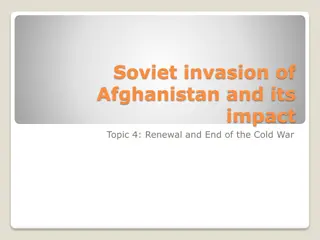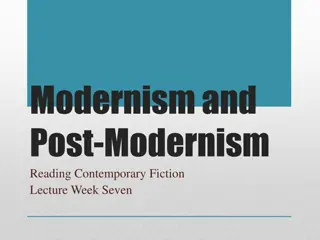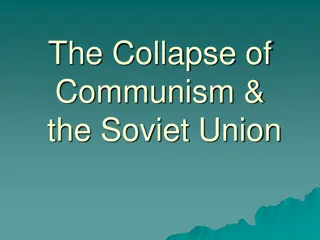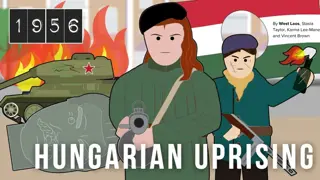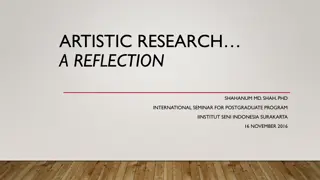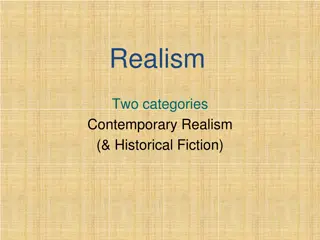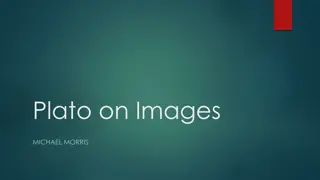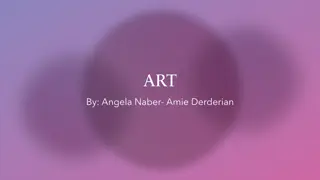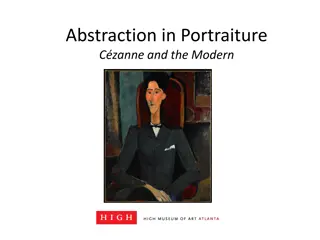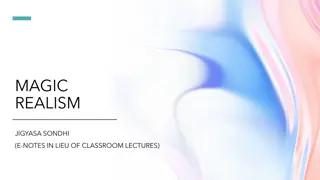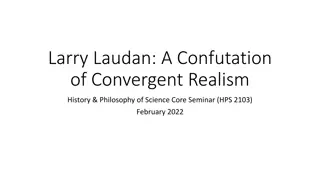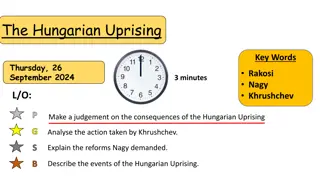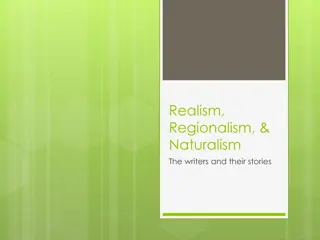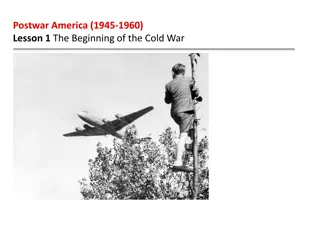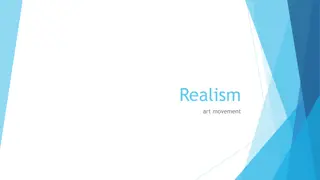Soviet Socialist Realism: Artistic Representation of Revolutionary Development
Socialist Realism emerged as the fundamental method of Soviet literature and art, emphasizing truthful and historically concrete depictions of reality within a revolutionary context. It required artists to engage in ideological transformation and educate the masses in the spirit of socialism. This artistic movement aimed to depict proletarian life, typical situations, and partisan themes, showcasing the power of the working class in a realistic manner. The images and sculptures created under this ideology often celebrated the achievements of workers and the collective spirit of socialism.
Download Presentation

Please find below an Image/Link to download the presentation.
The content on the website is provided AS IS for your information and personal use only. It may not be sold, licensed, or shared on other websites without obtaining consent from the author.If you encounter any issues during the download, it is possible that the publisher has removed the file from their server.
You are allowed to download the files provided on this website for personal or commercial use, subject to the condition that they are used lawfully. All files are the property of their respective owners.
The content on the website is provided AS IS for your information and personal use only. It may not be sold, licensed, or shared on other websites without obtaining consent from the author.
E N D
Presentation Transcript
Socialist Realism 1)Proletarian 2)Typical 3)Realistic 4)Partisan
1934 Statute of the Union of Soviet Writers Socialist realism is the basic method of Soviet literature and literary criticism. It demands of the artist the truthful, historically concrete representation of reality in its revolutionary development. Moreover, the truthfulness and historical concreteness of the artistic representation of reality must be linked with the task of ideological transformation and education of workers in the spirit of socialism
B.E. Vladimirski: Female Worker B.E. Vladimirski: Miner (1929)
Vera Mukhina: Worker and Kolkhos Woman (1937) 24 m
Sculpture of a Worker on one of Stalin s skyscrapers in Moscow
With Stalins eyes a mountain is pushed apart. The squinting plain looks far into the distance: Like a sea without seams, the future from the past From a giant plow to where the sun s furrow glistens. He smiles a reaper s smile, the smiling friend, Reaper of handshakes in a conversation Which has begun and which will never end Smack in the middle of all of Creation. And every single haystack, every barn Is strong and clean and smart a living chattel, A mankind miracle! May life be large. Listen to happiness s axis roll and rattle. From: Ode to Stalin (Osip Mandelstam 1937)
O great Stalin, O leader of the peoples, Thou who broughtest man to birth. Thou who fructifies the earth, Thou who restorest to centuries, Thou who makest bloom the spring, Thou who makest vibrate the musical chords... Thou, splendour of my spring, O thou, Sun reflected by millions of hearts. ---A. O.Avidenko (1935)
The production novel The historical novel The novel about a worthy intellectual or inventor The novel of war and revolution The villain or spy novel The novel about the West Road to consciousness and a task Tale of moral and political growth + tale of task fulfilment Fighting against a villain or overcoming love to a foe
Production novel 1)Prologue or Separation 2)Setting up the task 3)Transition (Trials etc.) 4)Climax (Fulfilment of the Task is Threatened) 5)Incorporation (Initiation) 6)Finale (or Celebration of Incorporation) Katerina Clark, The Soviet Novel. History as Ritual. 3rd ed. (Bloomington, Indianapolis 2000)
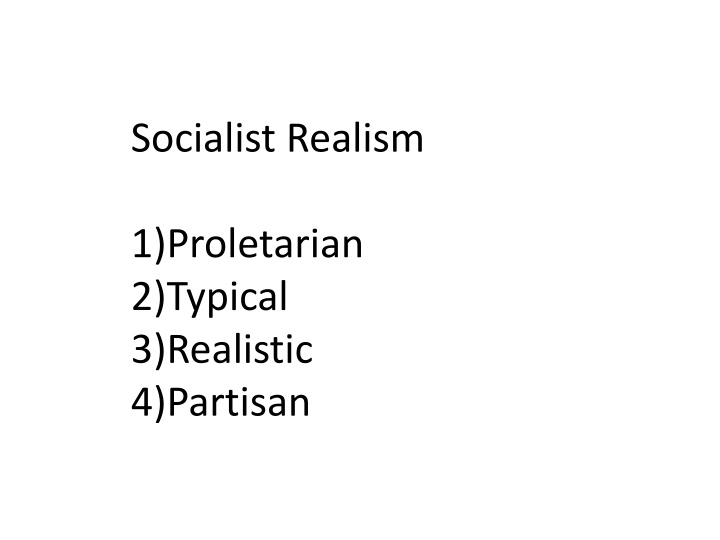

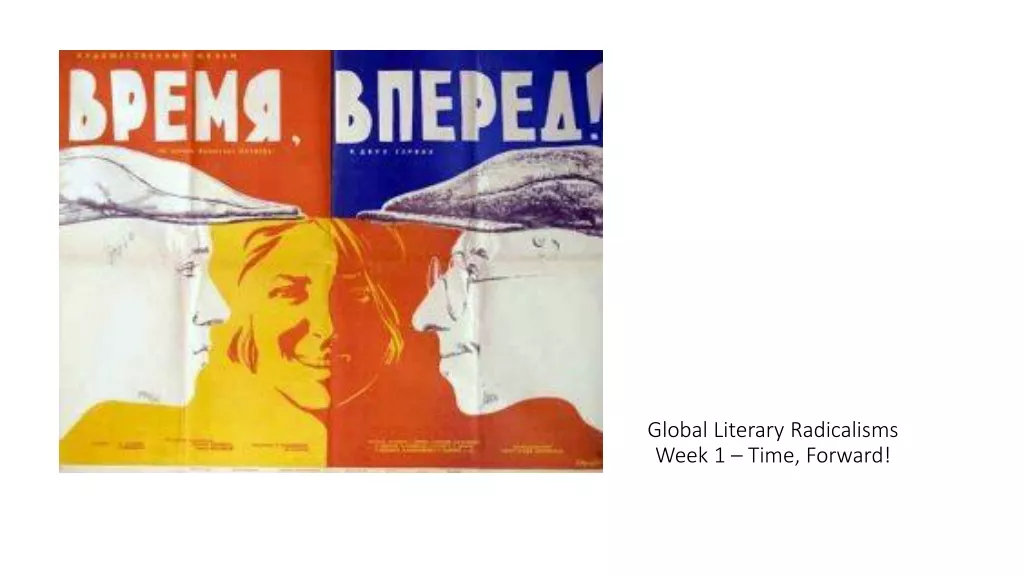
![[PDF⚡READ❤ONLINE] Energiya-Buran: The Soviet Space Shuttle (Springer Praxis Book](/thumb/21613/pdf-read-online-energiya-buran-the-soviet-space-shuttle-springer-praxis-book.jpg)

